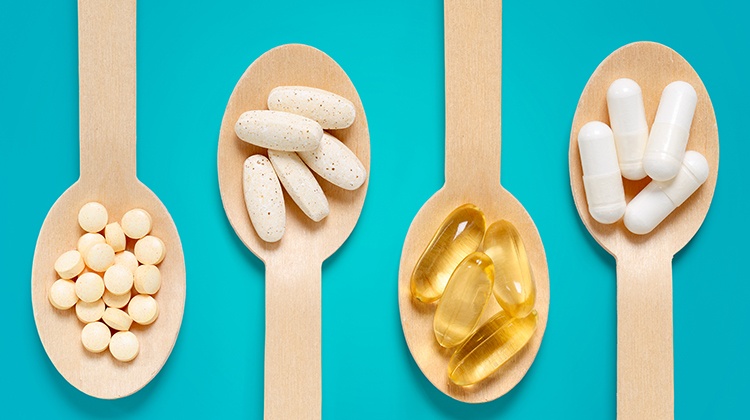Endometriosis is a disorder that can cause significant distress, both physically and mentally, in women and is often misunderstood.
Lena Dunham has written a very personal account of her decision to have a hysterectomy at 31 after years of suffering with endometriosis in the recent issue of Vogue (In Her Own Words). She describes battling the disorder for ten years and undergoing nine surgical procedures and how she chose the surgery despite knowing that the surgery does not guarantee that the pain will cease, and is not a cure.
Endometriosis is estimated to affect 176 million women and their families worldwide. It is not related to lifestyle choices and affects physical, mental and social wellbeing, often affecting a woman’s ability to complete education, maintain a career, interferes with relationships, social activities and can affect fertility. Between 1% and 10% of Australian women have the condition.
A general lack of awareness by both women and health care professionals, perhaps due to “normalisation” of symptoms, results in significant delay between experiencing symptoms, diagnosis and treatment (the average is seven years).
Endometriosis is condition where tissue similar to the lining of the womb (endometrium) grows outside the womb, the hormones that usually trigger a period cause bleeding at the sites of endometrial-like tissue and causes pain. The cause of endometriosis is currently unknown, with several theories such as retrograde flow of endometrial tissue out of the womb through the fallopian tubes implanting in the pelvic cavity, genetic predisposition and other gynaecological factors and environmental exposures (such as dioxin and PCBs) all being investigated as contributing. Although endometriosis is associated with inflammation and immunological dysfunction, it has not been proven itself to be an autoimmune disorder. Some studies have linked the presence of endometriosis to the development of ovarian cancer, but the association is not definitive and the absolute risk for a woman with endometriosis is very low. The complicated nature of pain pathways is also involved, explaining why some women have advanced endometriosis with few symptoms and others very little endometriosis and severe symptoms. It is possible to have surgical treatment for endometriosis and ongoing significant pain due to the pathways mis-firing and not progression of the disease. The symptoms of endometriosis include painful periods, painful ovulation, pain during and after sex, fatigue and infertility. Diagnosis can only be made by laparoscopic (keyhole) surgery.
The International Organisation, endomeriosis.org has posted a very useful list of myths and misconceptions:
- Endometriosis is difficult to understand. There are many associated myths, taboos, hit-and-miss treatments, lack of awareness, a wide variety of symptoms contributing to a frustrating, painful chronic condition. Health professionals often have poor understanding of the disease and the media present varying understanding of the disease and outcomes, so women receive confusing information
- Severe period pain is not normal. If period pain interferes with daily life, such as going to school, work or day-to-day activities it is not normal
- No-one is too young to have it, and it is possible to have symptoms after menopause, particularly due to scarring and inflammation effects of the disease
- Hormonal treatments do not cure endometriosis. Hormonal treatments temporarily suppress the symptoms while the drugs are being taken. Surgery by an experienced gynaecologist is the only effective medical treatment
- Pregnancy does not cure endometriosis. Like hormonal drugs, pregnancy temporarily suppresses the symptoms, but does not eradicate the disease itself.
- Endometriosis does not equal infertility. Most women with endometriosis go on to have children. In general, it is believed that the likelihood of fertility problems increases with the severity of the disease and age. There are no statistics available to give a reliable indication of an individual woman’s fertility.
- Infertility is not just caused by endometriosis on the tubes, pelvic inflammatory disease damages and blocks fallopian tubes. Tubal endometriosis is much less common and does not always cause infertility. The mechanism by which endometriosis causes infertility remains largely unknown
- Hysterectomy does not cure endometriosis
- It is a physical, not an emotional disorder. Women with endometriosis may struggle with emotional distress associated and, as a result of, unrelenting pain and infertility
- Abortion does not cause endometriosis
- Douching does not cause endometriosis
There is no best treatment for endometriosis. Treatments will work differently for individual women. It is important to be aware of the different kinds of treatments and their possible effects, side-effects or complications. Usually a combination of treatments can be used to relieve symptoms.
There are now national support organisations worldwide. The Pelvic Pain Foundation of Australia (pelvicpain.org) website has links to the Australian Coalition for Endometriosis, the peak consumer and advocacy body representing the needs of girls and women with endometriosis in Australia. There is also a pelvic pain booklet , advice regarding pelvic muscle relaxation, and links to subscribe to the regular newsletter. Endometriosis Australia has a helpful website (endometriosisaustralia.org) containing a medical Webinar series as an educational reference and possibly has more detailed information regarding the nature of the treatment options.
To read the Lena Dunham article, see https://www.vogue.com/article/lena-dunham-hysterectomy-vogue-march-2018-issue
Dr Lisa Surman, CBD West Medical Centre, Perth, WA
Member of Best Practice Software’s Clinical Leadership Advisory Committee,




